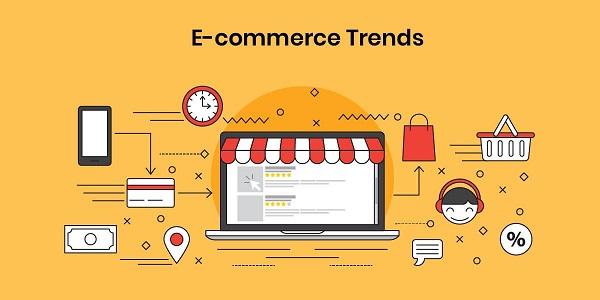
The first item ever ordered online on Amazon (a book) is in 1995. Around 25 years since then, the e-commerce industry has over $2 trillion in sales all over the world.
E-commerce has bought a revolution in order to meet people’s needs and requirements. It has also made their shopping easier. When e-commerce was started, it was quite limited to its capabilities, but now the time has gone. The world of e-commerce has made its existence in different areas, whether it is enhanced return policies, customization, or improved integration.
Importance of E-commerce Trends
Since 1995, E-commerce has been continuously changing year by year. Merchants are developing and enhancing their businesses by reaching a large extent of customers. The world of e-commerce is getting competitive. To be at the top of the competition, e-commerce trends are required to be monitored and analyzed constantly. You might risk falling behind the competition if you avoid keeping an eagle eye on e-commerce trends. Thus, it is important to look ahead in order to ensure future success.
As we are into 2021, e-commerce business owners are required to know completely about these, so that they can take advantage of them. Therefore, it becomes necessary to analyze the e-commerce trends and adopted them appropriately.
E-commerce Trends in 2021
Still, you are on the fence about the future of commerce? You may take a look at the top e-commerce trends of 2021.
1. Online Sales Growth is huge
E-commerce sales are being grown rapidly and continuously. In today’s world, online shopping has become one of the most popular and important activities. As per the eMarketer, 2021, the Global E-commerce Sale is expected to grow from 26.7 percent year-over-year to $4.891 trillion in 2021.
Not only this, online sales are expected to hit $6.388 trillion which is nearly twice that of 2019’s total e-commerce sales.
2. E-commerce future after Corona Pandemic
It will not be wrong to say that the impact of Covid-19 and lockdown has helped E-commerce businesses to grow. Already, Jeff Bezos has recorded a nearly $24 billion increase for Amazon’s products and services.
Along with this, experts predict that the demand in an increase in e-commerce because of Covid-19 impact is not only a short-term boost but it will stay here. Several market analysts say that the current penetration rates (15 percent) are expected to be increased up to 25 percent by 2025 (MarketWatch, 2020).
3. Growth in Mobile Shopping
In 2020, the total sales made through mobile devices was $2.66 trillion and the sales are expected to grow by 18.8 percent to $3.16 trillion by the year 2021 (Payvision, 2020). Almost every website is created user-friendly which makes e-commerce simple and easily accessible.
4. Youth Changing the Business Landscape
The effect of Covid-19 and lockdown cannot be denied. Over 54% of consumers moved towards spending online. Almost customers of all ages have shifted towards online shopping, but mostly the young generation has made a lot of contributions to the e-commerce trend.
As per the Shopify, 2020 report, two out of three (67 percent) young consumers aged 18 to 34 are spending more money purchasing items online now than before the pandemic. Additionally, the growth has also been seen in the older age groups whose shopping expenditure has increased by 57 percent.
5. Role of Social Media
The count of online shoppers has increased rapidly. Social media platforms like Instagram and Facebook have introduced the ‘buy’ button and ‘checkout’ button. Apart from this, platforms like Shopify allow businesses to link their online stores with social media sites.
With the change in consumer behavior and technology, you are required to focus on the e-commerce trends in 2021. This is the time to take your e-commerce business to the next level.

Your go-to source for the latest in tech, finance, health, and entertainment, with a knack for distilling complex topics into accessible insights, We deliver timely updates on the ever-evolving landscapes of technology, finance, health, and entertainment










